They could exist
 Bashny.Net
Bashny.Net
Akkorokamui.
Ancient people Ainu from Japan have long believed that Volcano Bay on the southern coast of Hokkaido is home to a huge octopus Akkorokamui. Over the years, numerous observations have been reported this creature. British missionary named John Batchelor, who worked in Hokkaido in early 1900, has recorded one such observation in his book, described as "a huge sea monster with big staring eyes" attacked three local fishermen and their boat, "The monster was Round and emits a dark and fetid liquid fragrance ... The three men fled in panic, not so much out of fear as they claimed, but from the horrible smell. However, they were so frightened that they refused to get up the next morning and there; they lay in their beds, pale and trembling. »
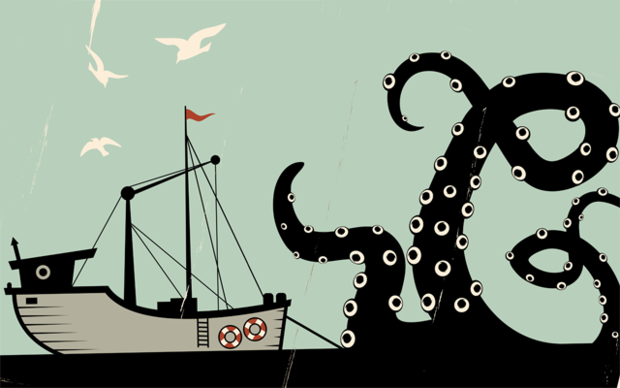
Ahul.
Ahuly - huge carnivorous bats that supposedly inhabit the rainforests of Java in Indonesia. According to rumors, they have a wingspan of over 3 meters, covered with a thick brown or black fur as fruit bats, but unlike the bats have long, strong legs and claws and hunt they do on people. Ahuly often common owls, eagles and other large birds of prey which inhabit the same rain forests, but some sources claim that animals do exist and can be isolated and yet undiscovered species descended from pterosaurs.
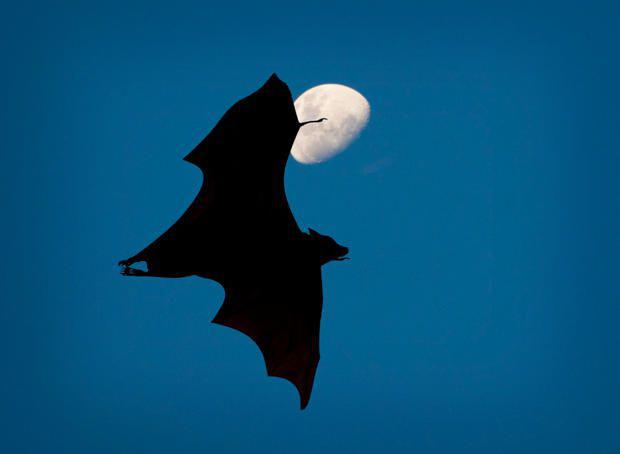
Altamaha-ha.
Altamaha-ha - River Monsters 10 meters or more in length with large fins and snout like seals, which inhabit the Altamaha River estuary near Darien, Georgia, USA. Although for all time was recorded many reports of sightings Altamaha-ha, the fact that Darien was founded as a new group of Inverness Highland in 1736, gives reason to believe that the legend is nothing more than a descendant of Scots story about the Loch Ness Monster.

Dobhar Chu.
Dobhar Chu or "water dog" - otter like animal that lives in isolated freshwater lakes and rivers of Ireland. Usually it is described as a hybrid of a dog and a fish with a long body covered with thick fur. Despite the fact that it is quite large, it can move very fast in the water and on land - according to one story, he is able to keep up with galloping horses. Messages about seeing creatures date back several centuries in Ireland, and there are at least two gravestones (including one in County Leitrim, dated 1722), people who reportedly were attacked and killed Dobhar Chu.
Emel-NTA.
Many Central African tribes believe that the Congo River inhabit swamps huge semi-aquatic creature known as Emel-NTA. Looks like a hippo, but larger, armed with one long bony tusk or horn in the center of the forehead, Emel-NTA herbivore, but has a reputation as a hippopotamus dangerous and short-tempered animal, even were reports that he attacked and killed larger than he himself, of animals; His name means "killer of elephants."
Filiki terrace.
The waters off the coast of Cape Greco National Park is home to Cyprus sea monster known as Filiki Teras or "friendly monster". Its name suggests that the monster never attack people, but he nevertheless gained a reputation destroyer fishing nets and small boats. Stories about Filiki Terrace inspired the Greek legend of Scylla, a huge sea monster who attacked the boat of Odysseus, but in reality there are likely to be nothing more than a squid or octopus.
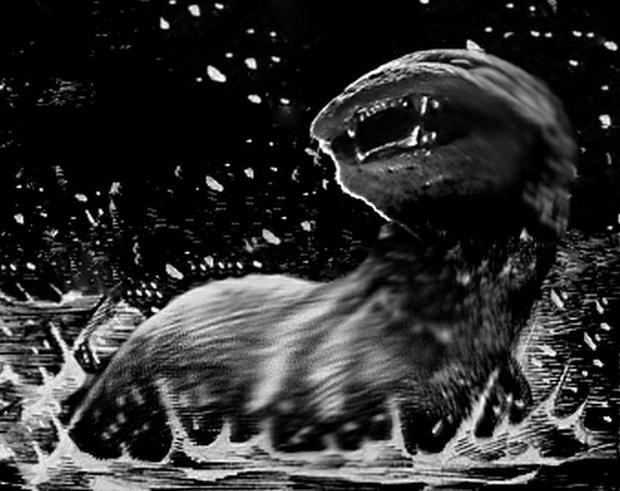
Grutslang.
Grutslang or "large snake" - a monster that lives in caves Richtersveld, mountainous desert region in the north-western part of South Africa. In local mythology grutslang was a creature with the head and trunk of an elephant and a half with the other half of the body and tail of a huge snake. When the earth was created, all grutslangi were destroyed, but according to legend, some survived and went into the deepest caves of the Northern Cape Province. Stories about huge snakes, inspired by real observations huge pythons that live in the same neighborhood, met in South African folklore. Responsibility for the mysterious disappearance of a British diamond magnate named Peter Grayson in 1917 Richtersvelde sometimes confer on grutslangov.
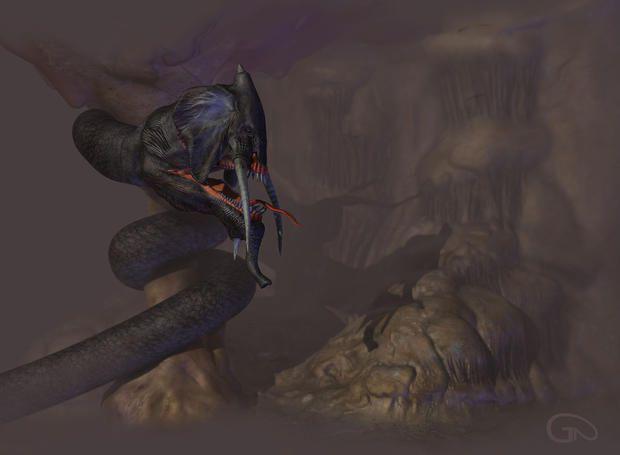
Jersey Devil.
Jersey Devil - kriptid living in areas in the Pine Barrens of New Jersey. According to legend, the creature was unwelcome thirteenth son of one of the earliest settlers in the area, Mother Leeds, who offered his son to the devil's birthday in 1735, because she and her husband could not afford to raise another child. Since then, there have been reports of hundreds of observations of two-legged monster with hooves, head like a sheep, and large scaly wings, including one famous incident that occurred in winter 1909, when the hoof marks mysteriously appeared on the snow fences, walls and roofs in the area .
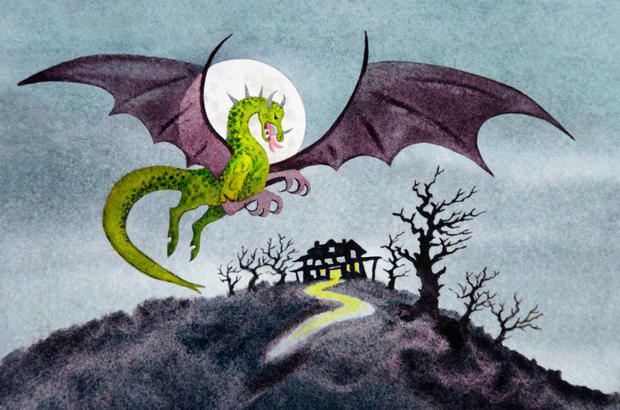
Mapinguari.
Mapinguari - large, like a monkey creatures that inhabit the rainforest on the border between Brazil and Bolivia. According to local folklore about 2.5 Mapinguari Mestre in height, it has a rigid (and apparently bulletproof) covering the back, thick red fur on the head and belly, long, curved claws and a second mouth in the center of the abdomen. When he is approached by people Mapinguari enraged, gets up on its hind limbs as a bear, and can emit a terrible odor to ward off potential hunters. Even the New York Times in 2007, wrote about this creature.
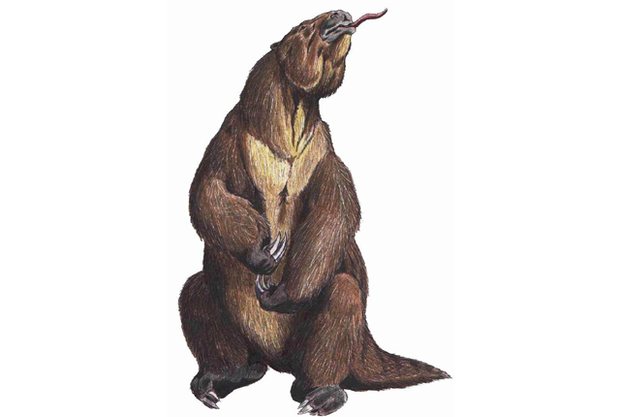
Ogopogo.
Ogopogo - a huge water snake that lives in Lake Okanagan in British Columbia. Messages about seeing Ogopogo relate to the early 1800s, when the creature was originally known under the name of naytaka meaning "Devil's Lake". Name of Ogopogo was not used until 1920, when it was borrowed from the title of a popular British musical numbers Wow-pogo.
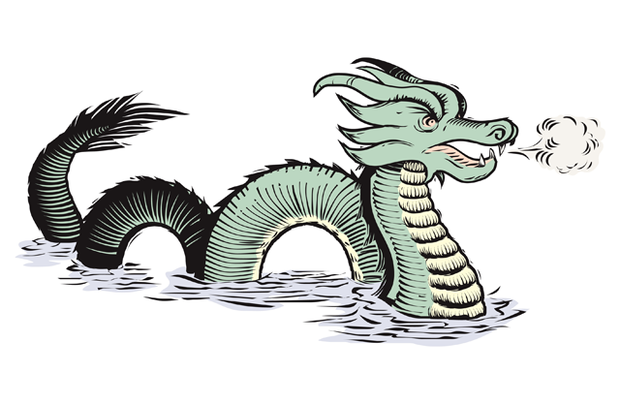
Olgoy Jorge.
Name Olgoy Jorge means "large intestine worm" in the Mongolian language, but this underground kriptid to 1.5 meters in length is more like a giant earthworm than a parasitic tapeworm. Also less known as "Mongolian deadly worm" Olgoy Jorge lives under the sands of the Gobi Desert and the southern approaches to the surface only in the warmer summer months, or when the ground gets too wet for its survival. Reports of observations argue that Olgoy Jorge able to spit venom or acid, while his body is covered with toxic slime, and anyone who touches it will be immediately killed.
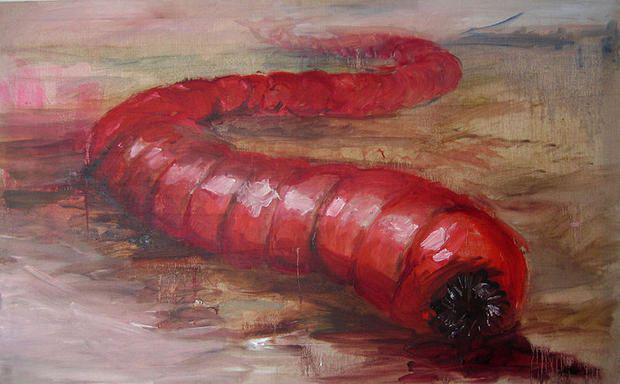
Momo.
"Momo" - short name "Missouri Monster" - a mysterious Pithecanthropus like Bigfoot that inhabits forests near the Mississippi River, which runs through Missouri. Was first seen in 1971, Momo describe being two meters tall with a broad head in the shape of a pumpkin and a thick dark fur. According to reports some being aggressive, and as a South American Mapinguari, able to emit a terrible odor, worse than a skunk to scare off potential attackers.
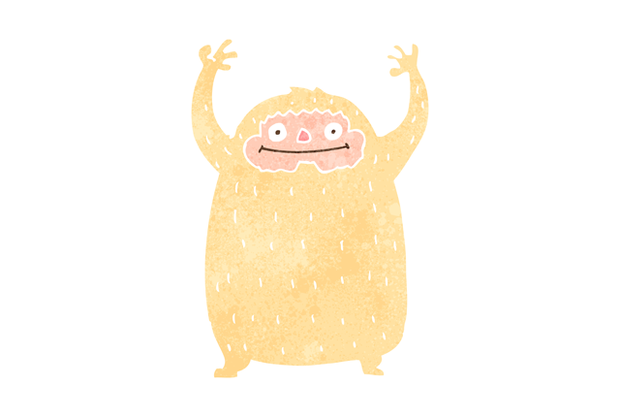
Chuck.
Folklore of the British Isles is full of stories about the mysterious black dogs that attack the rural towns and villages across the country. Chuck, a huge black dog living in the Far East of England on the coast, became very famous after an attack on a church in the village of Banga, Suffolk, during a storm in 1577. According to local reports, while the villagers were hiding from the storm in the church, a huge black dog burst into the door of the church, killing a man and his son, and broke one of the pillars supporting the church spire, which ruined nave. Running away from the church, Chuck left marks on the doors of the church, which can be seen to this day.
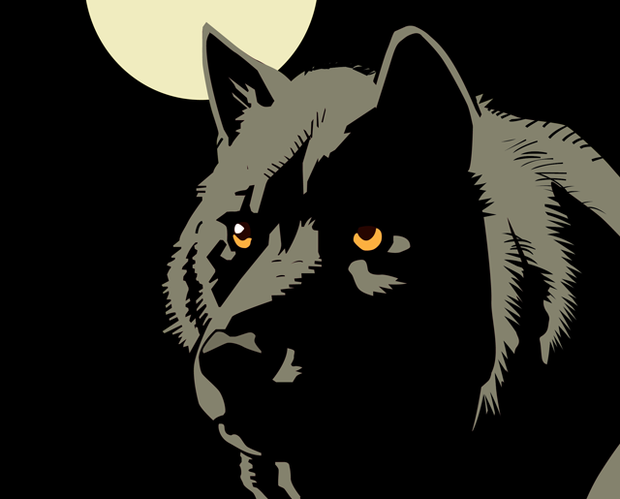
Tatzelwurm.
Tatzelwurm - lizard-like creatures that inhabit the most isolated areas of the Alps. Although reports on their size and the appearance is quite contradictory, they are usually about 1-1.5 meters in length with a large cat's head and a huge mouth. Their front limbs are short and armed with long claws, but they have no hind limbs, instead of their bodies taper into a long, snake-like tail. These creatures are known as Tatzelwurm in Germany, in France Arassas, Stollevurms in Switzerland, Austria and Bergstutzen Basiliskos in Italy, met all along the Alps, including the recent numerous observations reported in the Italian newspaper Il Giorno in 2009.
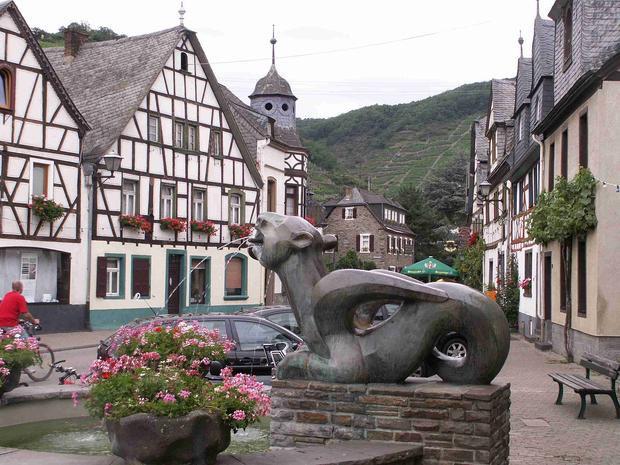
Tessie.
Tahoe Tessie - Ozerny monster that lives in the waters of Lake Tahoe in central California. Reports of observations Tessie are 19 th century and is usually described huge, like a snake creature with a long neck and a hump on the back, which is floating so quickly that can keep up with sailboats.
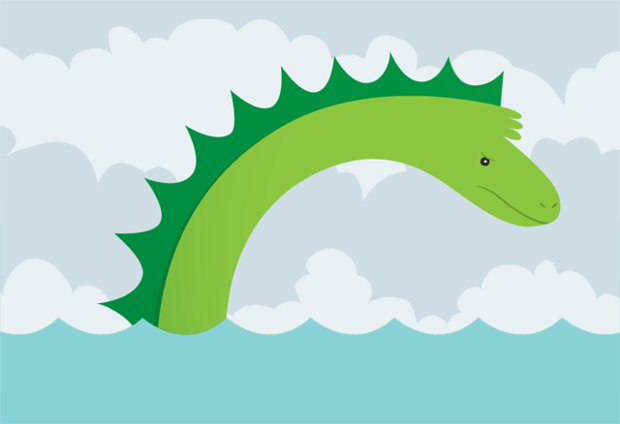
Jovi.
Jovi - similar Yeti monkeys inhabiting the Outback in Australia. Usually they are described as tall and stocky, covered from head to toe with a thick black or dark red fur humanoid creature. Most reports on the observation Jovi argues that there are shy and easily frightened, although some stories they can be aggressive and publish monstrous cry when they are threatened. Nowadays there is considered a myth, but in the 19th century was a surprisingly large number of reports of their observations, and in 1892 an Australian adventurer and amateur scientist named Herbert J. McQuay, who saw Jovi about Gulf Bateman in New South Wales a few years previously offered to the Australian Museum in Sydney to catch the creature for 40 pounds (about $ 3,000 today). He failed.
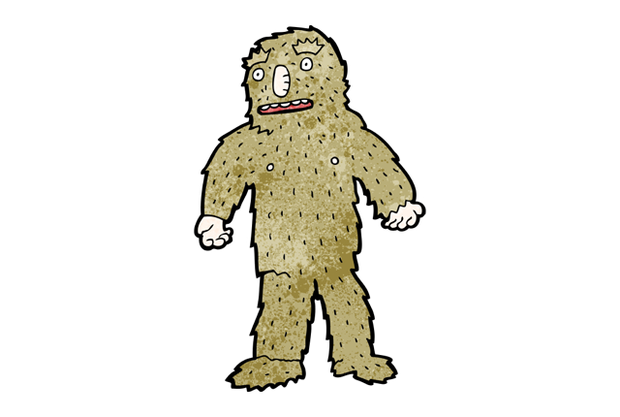
Source: muz4in.net
Ancient people Ainu from Japan have long believed that Volcano Bay on the southern coast of Hokkaido is home to a huge octopus Akkorokamui. Over the years, numerous observations have been reported this creature. British missionary named John Batchelor, who worked in Hokkaido in early 1900, has recorded one such observation in his book, described as "a huge sea monster with big staring eyes" attacked three local fishermen and their boat, "The monster was Round and emits a dark and fetid liquid fragrance ... The three men fled in panic, not so much out of fear as they claimed, but from the horrible smell. However, they were so frightened that they refused to get up the next morning and there; they lay in their beds, pale and trembling. »

Ahul.
Ahuly - huge carnivorous bats that supposedly inhabit the rainforests of Java in Indonesia. According to rumors, they have a wingspan of over 3 meters, covered with a thick brown or black fur as fruit bats, but unlike the bats have long, strong legs and claws and hunt they do on people. Ahuly often common owls, eagles and other large birds of prey which inhabit the same rain forests, but some sources claim that animals do exist and can be isolated and yet undiscovered species descended from pterosaurs.

Altamaha-ha.
Altamaha-ha - River Monsters 10 meters or more in length with large fins and snout like seals, which inhabit the Altamaha River estuary near Darien, Georgia, USA. Although for all time was recorded many reports of sightings Altamaha-ha, the fact that Darien was founded as a new group of Inverness Highland in 1736, gives reason to believe that the legend is nothing more than a descendant of Scots story about the Loch Ness Monster.

Dobhar Chu.
Dobhar Chu or "water dog" - otter like animal that lives in isolated freshwater lakes and rivers of Ireland. Usually it is described as a hybrid of a dog and a fish with a long body covered with thick fur. Despite the fact that it is quite large, it can move very fast in the water and on land - according to one story, he is able to keep up with galloping horses. Messages about seeing creatures date back several centuries in Ireland, and there are at least two gravestones (including one in County Leitrim, dated 1722), people who reportedly were attacked and killed Dobhar Chu.
Emel-NTA.
Many Central African tribes believe that the Congo River inhabit swamps huge semi-aquatic creature known as Emel-NTA. Looks like a hippo, but larger, armed with one long bony tusk or horn in the center of the forehead, Emel-NTA herbivore, but has a reputation as a hippopotamus dangerous and short-tempered animal, even were reports that he attacked and killed larger than he himself, of animals; His name means "killer of elephants."
Filiki terrace.
The waters off the coast of Cape Greco National Park is home to Cyprus sea monster known as Filiki Teras or "friendly monster". Its name suggests that the monster never attack people, but he nevertheless gained a reputation destroyer fishing nets and small boats. Stories about Filiki Terrace inspired the Greek legend of Scylla, a huge sea monster who attacked the boat of Odysseus, but in reality there are likely to be nothing more than a squid or octopus.

Grutslang.
Grutslang or "large snake" - a monster that lives in caves Richtersveld, mountainous desert region in the north-western part of South Africa. In local mythology grutslang was a creature with the head and trunk of an elephant and a half with the other half of the body and tail of a huge snake. When the earth was created, all grutslangi were destroyed, but according to legend, some survived and went into the deepest caves of the Northern Cape Province. Stories about huge snakes, inspired by real observations huge pythons that live in the same neighborhood, met in South African folklore. Responsibility for the mysterious disappearance of a British diamond magnate named Peter Grayson in 1917 Richtersvelde sometimes confer on grutslangov.

Jersey Devil.
Jersey Devil - kriptid living in areas in the Pine Barrens of New Jersey. According to legend, the creature was unwelcome thirteenth son of one of the earliest settlers in the area, Mother Leeds, who offered his son to the devil's birthday in 1735, because she and her husband could not afford to raise another child. Since then, there have been reports of hundreds of observations of two-legged monster with hooves, head like a sheep, and large scaly wings, including one famous incident that occurred in winter 1909, when the hoof marks mysteriously appeared on the snow fences, walls and roofs in the area .

Mapinguari.
Mapinguari - large, like a monkey creatures that inhabit the rainforest on the border between Brazil and Bolivia. According to local folklore about 2.5 Mapinguari Mestre in height, it has a rigid (and apparently bulletproof) covering the back, thick red fur on the head and belly, long, curved claws and a second mouth in the center of the abdomen. When he is approached by people Mapinguari enraged, gets up on its hind limbs as a bear, and can emit a terrible odor to ward off potential hunters. Even the New York Times in 2007, wrote about this creature.

Ogopogo.
Ogopogo - a huge water snake that lives in Lake Okanagan in British Columbia. Messages about seeing Ogopogo relate to the early 1800s, when the creature was originally known under the name of naytaka meaning "Devil's Lake". Name of Ogopogo was not used until 1920, when it was borrowed from the title of a popular British musical numbers Wow-pogo.

Olgoy Jorge.
Name Olgoy Jorge means "large intestine worm" in the Mongolian language, but this underground kriptid to 1.5 meters in length is more like a giant earthworm than a parasitic tapeworm. Also less known as "Mongolian deadly worm" Olgoy Jorge lives under the sands of the Gobi Desert and the southern approaches to the surface only in the warmer summer months, or when the ground gets too wet for its survival. Reports of observations argue that Olgoy Jorge able to spit venom or acid, while his body is covered with toxic slime, and anyone who touches it will be immediately killed.

Momo.
"Momo" - short name "Missouri Monster" - a mysterious Pithecanthropus like Bigfoot that inhabits forests near the Mississippi River, which runs through Missouri. Was first seen in 1971, Momo describe being two meters tall with a broad head in the shape of a pumpkin and a thick dark fur. According to reports some being aggressive, and as a South American Mapinguari, able to emit a terrible odor, worse than a skunk to scare off potential attackers.

Chuck.
Folklore of the British Isles is full of stories about the mysterious black dogs that attack the rural towns and villages across the country. Chuck, a huge black dog living in the Far East of England on the coast, became very famous after an attack on a church in the village of Banga, Suffolk, during a storm in 1577. According to local reports, while the villagers were hiding from the storm in the church, a huge black dog burst into the door of the church, killing a man and his son, and broke one of the pillars supporting the church spire, which ruined nave. Running away from the church, Chuck left marks on the doors of the church, which can be seen to this day.

Tatzelwurm.
Tatzelwurm - lizard-like creatures that inhabit the most isolated areas of the Alps. Although reports on their size and the appearance is quite contradictory, they are usually about 1-1.5 meters in length with a large cat's head and a huge mouth. Their front limbs are short and armed with long claws, but they have no hind limbs, instead of their bodies taper into a long, snake-like tail. These creatures are known as Tatzelwurm in Germany, in France Arassas, Stollevurms in Switzerland, Austria and Bergstutzen Basiliskos in Italy, met all along the Alps, including the recent numerous observations reported in the Italian newspaper Il Giorno in 2009.

Tessie.
Tahoe Tessie - Ozerny monster that lives in the waters of Lake Tahoe in central California. Reports of observations Tessie are 19 th century and is usually described huge, like a snake creature with a long neck and a hump on the back, which is floating so quickly that can keep up with sailboats.

Jovi.
Jovi - similar Yeti monkeys inhabiting the Outback in Australia. Usually they are described as tall and stocky, covered from head to toe with a thick black or dark red fur humanoid creature. Most reports on the observation Jovi argues that there are shy and easily frightened, although some stories they can be aggressive and publish monstrous cry when they are threatened. Nowadays there is considered a myth, but in the 19th century was a surprisingly large number of reports of their observations, and in 1892 an Australian adventurer and amateur scientist named Herbert J. McQuay, who saw Jovi about Gulf Bateman in New South Wales a few years previously offered to the Australian Museum in Sydney to catch the creature for 40 pounds (about $ 3,000 today). He failed.

Source: muz4in.net
Tags
See also
New NASA Mars 2020 rover will search for traces of life on the Red Planet
Why six thousand years ago, surgeons were doing trepanation
Smart and good, stupid and bad I
Amazing underwater opening (10 photos)
Interesting facts about the USSR and the homeland
20 false Islamic inventions
20 amazing facts, which is more like a lie than the truth
Interesting facts about Ancient Egypt
About zarobotok online

















